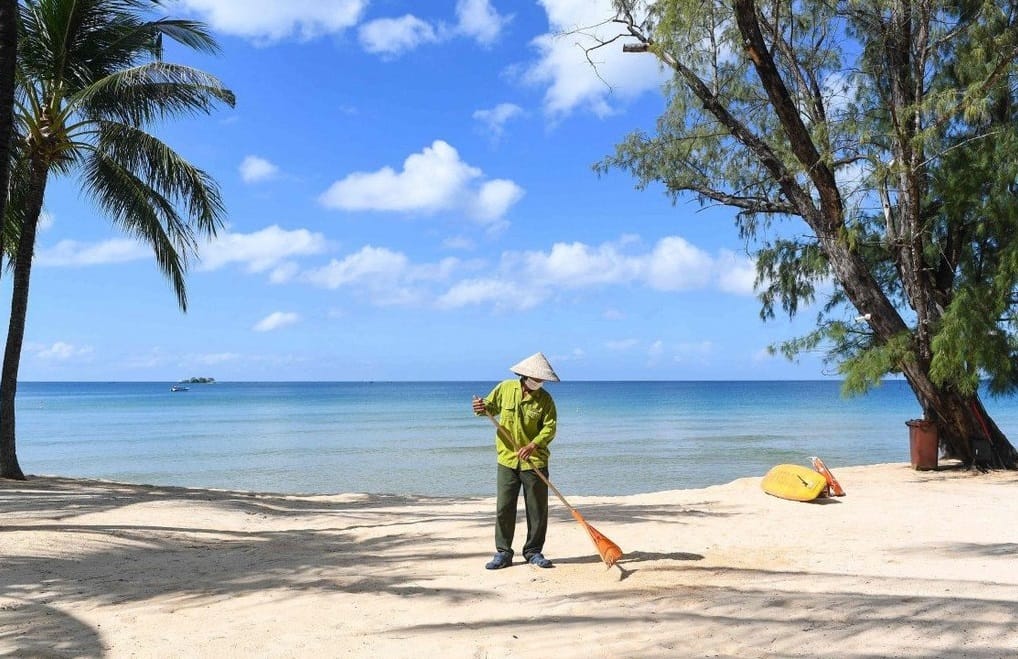NUKU’ALOFA, Tonga – Tropical Cyclone Rene pounded Tonga with powerful winds overnight, causing major damage to buildings in the capital city, tearing off roofs, downing trees and cutting power and phone lines in the South Pacific island nation.
When phone service was restored early Tuesday, police said they had no immediate reports of death or injury during the storm that has hammered the three main island groups of the kingdom for more than 24 hours.
“There’s widespread damage to crops … (and) to buildings,” police commander Chris Kelley told New Zealand’s National Radio. “Power has been off all night, there’s trees across roads, plus power lines. There has really been quite a bit of devastation.”
The nation’s National Disaster Committee was meeting Tuesday to begin assessing damage nationwide, described by its deputy director Mali’u Takai as possibly the worst in 50 years.
Nuku’alofa businesswoman Lee Miller said the night was nerve-wracking.
“Our home is OK apart from some water leaks,” she told National Radio. “There is severe tree damage, many power lines are down.”
Miller said the capital’s port area is “utterly devastated … we’re still getting big 50 knot (55 miles per hour, 88 kilometers per hour) gusts here and the sea is still coming over the sea wall,” she told National Radio. She said that yachts and fishing vessels all appeared secure but one barge had been tossed up on a reef.
Cyclone forecasters in Fiji said that by midmorning the storm was 95 miles (155 kilometers) south of Nuku’alofa and its force was expected to deteriorate as it moved into open sea.
The cyclone had been downgraded to a Category 3, packing winds up to 130 miles (209 kilometers) an hour at its center.
Prior to losing contact with the capital, Nuku’alofa, on Monday, the Ha’apai island group located in the center of the archipelago, had faced “very destructive hurricane force winds” with gusts of 143 miles (228 kilometers) an hour, the Meteorological Office said. Heavy rain, thunderstorms, sea swells and flooding were expected.
In the northern Vava’u islands group, contact was lost early Monday just after Rene hit. Coastal areas flooded as roiling seas surged ashore.
Kelley said no deaths or injuries had been reported in Vava’u or Ha’apai, and the biggest impact so far was on crops.
“We are aware of some damage to buildings but nothing serious at this stage,” he said.
Heavy rains had flooded many areas, while powerful winds tore down banana palms and fruit from mango and breadfruit trees.
Takai said at one point Monday evening that it had become too dangerous to go outside.
“It’s so noisy, it’s like … a locomotive is running around. It’s getting bad now, hopefully this is the worst part of it,” he told National Radio.
Hank Gros, who runs a tourism business in Neiafu, the main town in the Vava’u group, said winds there had decreased Monday afternoon, but residents faced up to six days without electricity because all lines were down. He said damage overall was less than expected.
“We were very lucky here,” he told National Radio. “A few houses have lost their roofs but mainly it’s … crop damage with most of the banana (palms) down.”
Most tourist resorts reported little damage, he said.
In low-lying Ha’apai, people were moved to higher ground and into emergency centers for safety, Kelley said, with the storm cutting power and communications, and damaging houses, trees and village gardens.
The cyclone also cut power supplies in Nuku’alofa, but communications from the capital to other islands were being restored early Tuesday after being cut for much of Monday.
Tonga, the South Pacific’s last kingdom, has a population of 101,000.
Earlier, New Zealand Prime Minister John Key said his government was already working with Australia, France and Tonga to coordinate relief aid.
WHAT TO TAKE AWAY FROM THIS ARTICLE:
- Hank Gros, who runs a tourism business in Neiafu, the main town in the Vava’u group, said winds there had decreased Monday afternoon, but residents faced up to six days without electricity because all lines were down.
- Prior to losing contact with the capital, Nuku’alofa, on Monday, the Ha’apai island group located in the center of the archipelago, had faced “very destructive hurricane force winds”.
- Cyclone forecasters in Fiji said that by midmorning the storm was 95 miles (155 kilometers) south of Nuku’alofa and its force was expected to deteriorate as it moved into open sea.






















